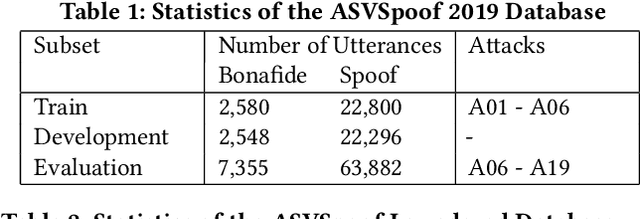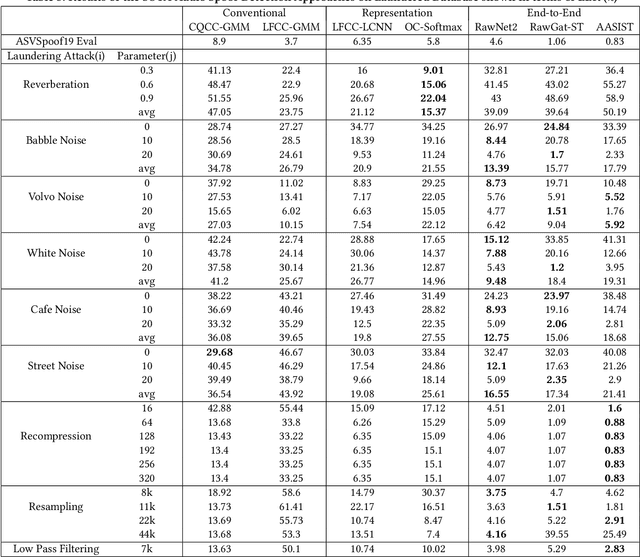Hashim Ali
Augmentation through Laundering Attacks for Audio Spoof Detection
Oct 01, 2024



Abstract:Recent text-to-speech (TTS) developments have made voice cloning (VC) more realistic, affordable, and easily accessible. This has given rise to many potential abuses of this technology, including Joe Biden's New Hampshire deepfake robocall. Several methodologies have been proposed to detect such clones. However, these methodologies have been trained and evaluated on relatively clean databases. Recently, ASVspoof 5 Challenge introduced a new crowd-sourced database of diverse acoustic conditions including various spoofing attacks and codec conditions. This paper is our submission to the ASVspoof 5 Challenge and aims to investigate the performance of Audio Spoof Detection, trained using data augmentation through laundering attacks, on the ASVSpoof 5 database. The results demonstrate that our system performs worst on A18, A19, A20, A26, and A30 spoofing attacks and in the codec and compression conditions of C08, C09, and C10.
Is Audio Spoof Detection Robust to Laundering Attacks?
Aug 27, 2024



Abstract:Voice-cloning (VC) systems have seen an exceptional increase in the realism of synthesized speech in recent years. The high quality of synthesized speech and the availability of low-cost VC services have given rise to many potential abuses of this technology. Several detection methodologies have been proposed over the years that can detect voice spoofs with reasonably good accuracy. However, these methodologies are mostly evaluated on clean audio databases, such as ASVSpoof 2019. This paper evaluates SOTA Audio Spoof Detection approaches in the presence of laundering attacks. In that regard, a new laundering attack database, called the ASVSpoof Laundering Database, is created. This database is based on the ASVSpoof 2019 (LA) eval database comprising a total of 1388.22 hours of audio recordings. Seven SOTA audio spoof detection approaches are evaluated on this laundered database. The results indicate that SOTA systems perform poorly in the presence of aggressive laundering attacks, especially reverberation and additive noise attacks. This suggests the need for robust audio spoof detection.
Protecting Voice-Controlled Devices against LASER Injection Attacks
Oct 13, 2023Abstract:Voice-Controllable Devices (VCDs) have seen an increasing trend towards their adoption due to the small form factor of the MEMS microphones and their easy integration into modern gadgets. Recent studies have revealed that MEMS microphones are vulnerable to audio-modulated laser injection attacks. This paper aims to develop countermeasures to detect and prevent laser injection attacks on MEMS microphones. A time-frequency decomposition based on discrete wavelet transform (DWT) is employed to decompose microphone output audio signal into n + 1 frequency subbands to capture photo-acoustic related artifacts. Higher-order statistical features consisting of the first four moments of subband audio signals, e.g., variance, skew, and kurtosis are used to distinguish between acoustic and photo-acoustic responses. An SVM classifier is used to learn the underlying model that differentiates between an acoustic- and laser-induced (photo-acoustic) response in the MEMS microphone. The proposed framework is evaluated on a data set of 190 audios, consisting of 19 speakers. The experimental results indicate that the proposed framework is able to correctly classify $98\%$ of the acoustic- and laser-induced audio in a random data partition setting and $100\%$ of the audio in speaker-independent and text-independent data partition settings.
 Add to Chrome
Add to Chrome Add to Firefox
Add to Firefox Add to Edge
Add to Edge